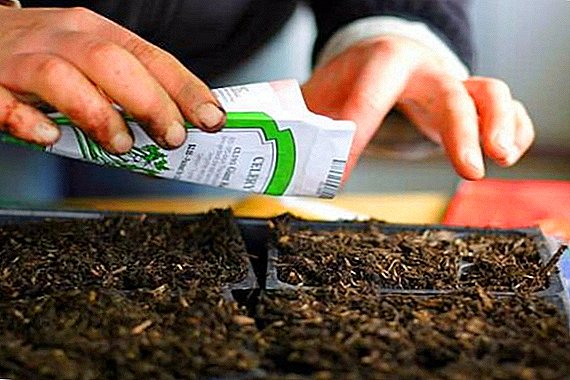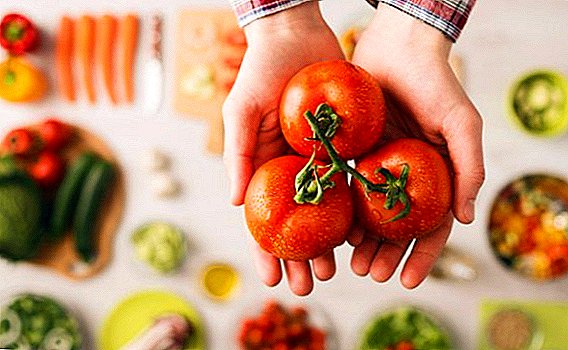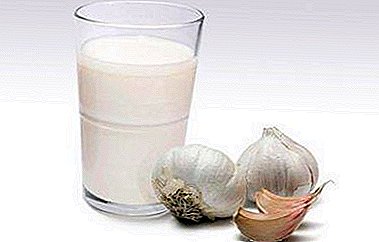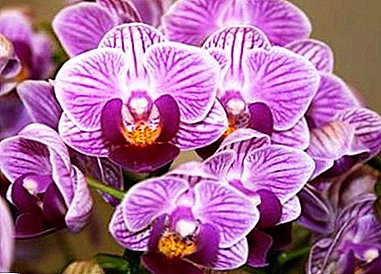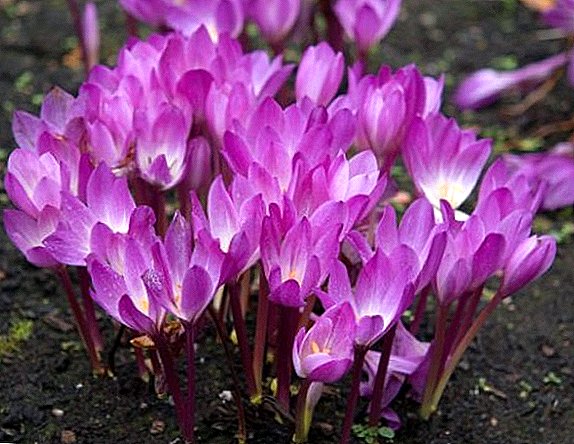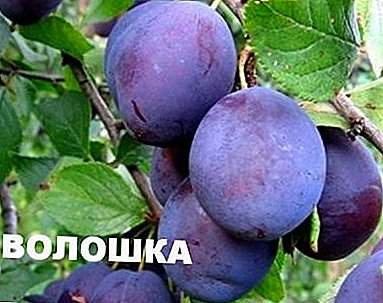
It is very difficult to find a garden in which a plum would not grow - a wonderful garden culture with tasty and healthy fruits.
Due to the tireless work of breeders, the variety variety grows every year and the gardener can easily pick the most interesting varieties for his plot.
Yes, and their acquisition is no longer a problem - delivered from anywhere, plant and grow for health.
Plum Voloshka: description of the variety
 Voloshka - late variety plum ripening in mid-September.
Voloshka - late variety plum ripening in mid-September.
The tree has a great growth power, a very beautiful crown, as if from a child's drawing, rounded, with an average thickening of the branches, densely covered with white flowers in spring and large blue fruits in the fall.
It is blue, not for nothing that the name "Voloshka" translates as "cornflower".
Variety is classified as large-fruited., blue with a thick wax coating, sometimes slightly orrusive plum weighs up to fifty grams, fruits of the same size have a deep, narrow seam and a deep okolochereshkovuyu funnel, as if specifically to make it convenient to break them.
The stone is easily detached and round., same as the fruit. The taste of Voloshka plum variety is just wonderful, yellow with a touch of green. the pulp is dense, juicy, sweet with pleasant sourness.
High yield - up to fifty kilograms from a tree, enters fructification in the fifth year after landing.
The variety is seedless. Average winter hardiness.
A photo
Visually with the Voloshka plum variety can be found in the photo below:





Selection
Variety plums Voloshka is a hybrid form of varieties Hungarian Italian and Big Blue. This hybrid was born in Ukraine in the city of Mlievsk in the Research Institute. L.P. Simirenko, entered the State Register in 1997 for the North Caucasus region.
Planting and care
In the event that the Voloshka variety has interested you, do not buy seedlings from random people, and if the plums do not grow in your area, take care of pollinator varieties.
Even samoplodnye varieties bear fruit much better if plums of other varieties grow alongside, Voloshka, however, is practically fruitless without over-pollination.
Saplings take root much better, if they are not more than two years old - the older a tree is, the harder it is for it to take root in a new place.
It is noticed that in the old gardens plum, of course several varieties, is planted compactly, and even a couple of thorny bushes grow nearby. And next to the bony gray brothers, cherry is also located - as caring for these plants is similar.
All plants love fertile soils, and in our power to ennoble even the least available ones. With enough sunlight, the fruit will be of remarkable quality, and good ventilation prevents the development of fungal diseases.
therefore large trees should be placed at intervals of three to four meters in a row and from five to six meters between the rows. The size of the planting fossa depends on the size of the seedling, the larger the plant, the larger the pit in diameter and depth.
 Main condition - free placement of the roots and the proper penetration of the root collar. For saplings of two years, a hole of 80 by 80 cm and a depth of up to half a meter will suffice.
Main condition - free placement of the roots and the proper penetration of the root collar. For saplings of two years, a hole of 80 by 80 cm and a depth of up to half a meter will suffice.
The pit should be filled with humus, it is about one or two buckets, add two or three handfuls of superphosphate, a handful of potassium salts, a couple of wood ash spades and mix everything thoroughly.
Place a sapling in the recess, according to the size of the roots, and fall asleep, treading the soil to avoid the formation of voids. Pay attention to the position of the root collar, it should not be buried.
Next to the seedling you need to place a wooden column for the garter of the seedling, the peg should not interfere with the seedling to grow and the garter should be free. An earthen roller is arranged on the edge of the circle; the water should not flow when irrigated. At planting at planting 2-3 buckets of water will be required, the near-stem circle is mulched.
Already by the autumn of the first year after planting it will be clearly visible how comfortable the seedlings are, what is their growth.
In the event that the seedlings came to you in the fall, it is better to postpone the planting until spring, and plant the seedlings in a shallow trench with roots, making a small earthen wall, leaving the ground part of the plant at an angle of 45 degrees above the ground surface. Snow protect saplings from freezing.
Watering and fertilizer
Young plants require constant attention, the soil should not dry out, watering should be alternated with loosening and weeding.
While the seedlings are not overgrown, the rows can be planted with strawberries or sown with legumes, they enrich the soil with nitrogen, and under the necessary vegetables are good beds. But you should not plant tall plants, they will shade the seedlings.
Prior to the beginning of fruiting, it is better to dig up the near-stem circles, introducing fertilizers.
Fertilizing with organic fertilizers is carried out once every three years, and mineral fertilizers are applied annually.
 Our industry produces mineral fertilizers in various combinations of active substances.
Our industry produces mineral fertilizers in various combinations of active substances.
Carefully reading the instructions, it is not difficult to choose the necessary, and the dosage in each individual case is specified exactly.
With the beginning of fruiting, it is more convenient to trowel the soil in the area with plums, replacing weeding by mowing the grass.
Along with grass, the root growth is mowed, with which the plum heavily litters the whole space around it.
If the summer was dry, plum trees must be watered before flowering, after flowering and after harvesting. A young plant needs 2 or 3 buckets of water, and for an adult 4 or 6 buckets, it is convenient to combine watering with top dressing.
Pruning
The first pruning of a plum seedling is carried out next spring after planting - the formation of the plant begins. When plum enters the fruiting tree formation is completed, but sanitary pruning necessarily carried out every year.
Do not thicken the crownThis leads to the stretching of the branches and the decrease in yield for this reason.
Fight against diseases and pests
In winter, at first glance, there is nothing to do in the garden, stay at home, wait for spring. Everyone who thinks so is mistaken, trees sleep under snow, and malicious pests of young plantings are mice, do not sleep.
Under the snow, it is very easy for them to sneak into the young bark and only trampling of snow around the trunk can prevent them. This event can be avoided if you tie the trunks in the fall with hard materials at hand.
In the spring, under the warm sunshine, plants wake up, and with them insects that parasitize them. The first spraying with insecticides should be carried out before flowering, the second after flowering.
Plantations of plum Bordeaux fluid are sprayed annually, and once every three years - with 3% Nitrafen solution.
Birds show no interest in plums, wasps fly around with a party, which greatly facilitates the work of a gardener.
Harvesting
 Variety plum "Voloshka" ripens in mid-September. By harvesting you need to prepare in advance, the harvest of plums from the tree, on average, about 50 kilograms, you need a container and a ladder is needed.
Variety plum "Voloshka" ripens in mid-September. By harvesting you need to prepare in advance, the harvest of plums from the tree, on average, about 50 kilograms, you need a container and a ladder is needed.
On such a tree from the ground you don’t pick a lot, only you break the branches, and this is simply unacceptable.
Varoshka variety universal purpose, fruits are good in fresh and processed.
Gardeners who planted this rich blue plum in their plots will not be disappointed - Voloshka is good both as a table variety and for blanks such as jams, compotes and jams, it is sufficiently resistant to the threat of pests and does not suffer from high rates of blood flow in the spring.
The only thing that should not be forgotten is the rather large size of the tree, which is higher than the plums of many other well-known varieties.


